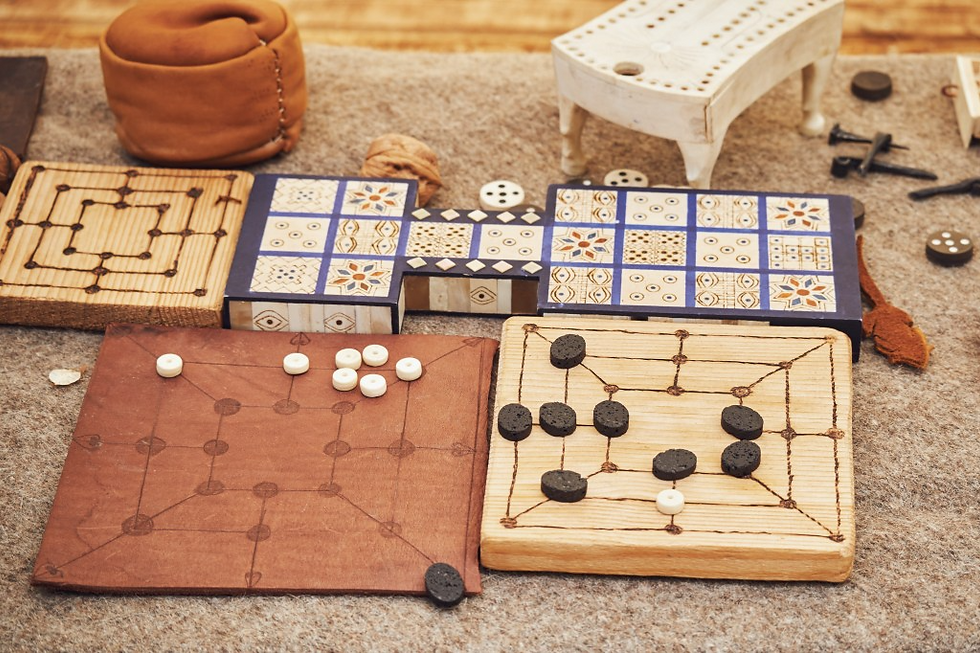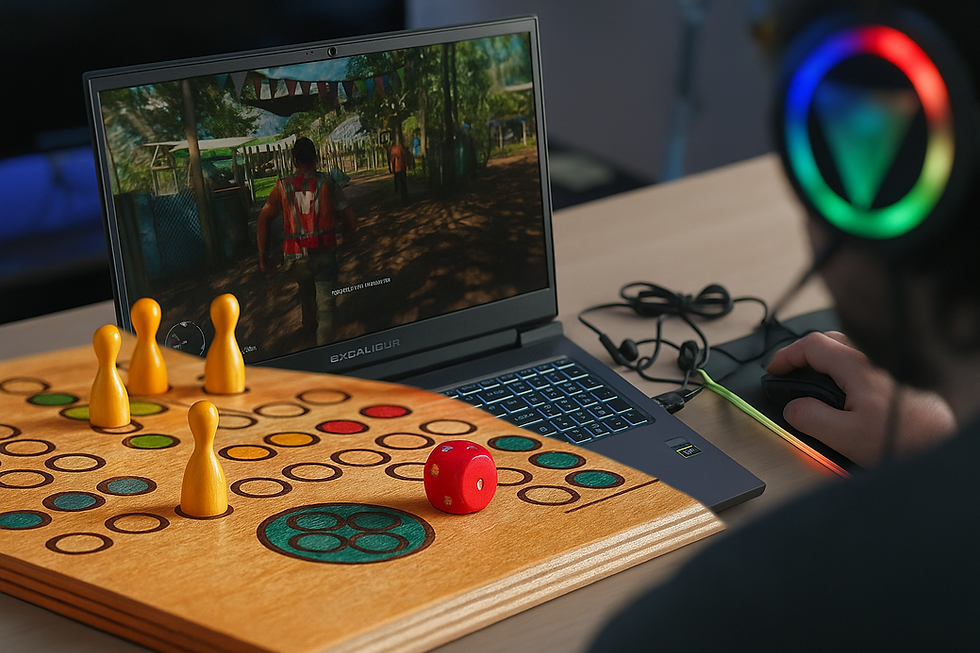From Dice to Digital: The Long History of Board Games
- shahmeerarshad008
- Aug 27
- 4 min read

Introduction: More Than Just Play
When we think of board games, images of Chess, Ludo, or Checkers often come to mind. Yet, the history of board games is as old as human civilization itself. Across ancient temples, royal courts, and family living rooms, people have always gathered around boards marked with grids, stones, and dice. These weren’t just pastimes—they were reflections of culture, strategy, and even spirituality.
Today, board games are not only sources of entertainment but also tools for learning, mental development, and community building. From ancient board games carved in stone to modern digital platforms like Pixply, the evolution of board games tells the story of human creativity across thousands of years.
Table of Contents
1. Ancient Beginnings of Board Games
The earliest traces of board games date back over 5,000 years. Archaeologists have uncovered ancient board games in Mesopotamia, Egypt, and the Indus Valley—civilizations that laid the foundation of human society.
The Royal Game of Ur (c. 2600 BCE): Excavated in Mesopotamia, this is considered one of the oldest known board games. Players raced their pieces across a board decorated with beautiful shells and lapis lazuli, guided by dice-like objects.
Senet (c. 3100 BCE): Found in Egyptian tombs, Senet wasn’t just entertainment. It was believed to symbolize the journey of the soul through the afterlife, making it both a game and a spiritual ritual.
Pachisi (India): Known as the ancestor of modern Ludo, Pachisi was a game of strategy and luck played on cross-shaped boards. It was deeply rooted in Indian royal courts.
These ancient board games highlight how humans used play to simulate life, chance, and destiny.
2. Cultural Board Games Around the World
Board games also carried cultural significance across societies. They were more than leisure—they symbolized values, intellect, and identity.
Go (China, c. 2500 years ago): Perhaps the ultimate test of patience and strategy, Go became a staple among scholars and emperors. Its balance of simplicity and complexity reflects Chinese philosophy.
Backgammon (Persia): One of the oldest known two-player games still widely played today. Its reliance on dice reflects both fate and tactical decision-making.
Mancala (Africa): A family of “sowing” games, Mancala showcases the agricultural roots of many African societies. Played with stones or seeds, it encouraged mathematical thinking.
These cultural board games reveal how societies used gameplay to express values of competition, wisdom, and survival.
(Want to dive deeper into how strategy games sharpen thinking? Check out our article on ancient strategy games).
3. Medieval and Renaissance Games in Europe
As civilizations advanced, board games reflected the rise of new social classes and ideas.
Chess: Emerging from India’s Chaturanga before spreading into Persia and Europe, Chess became a metaphor for war, strategy, and even politics. During the Middle Ages, it was considered a noble pursuit, training minds for real-world leadership.
Nine Men’s Morris: A simple yet clever game, popular across medieval Europe. Archaeologists even discovered boards carved into cathedral stones, showing how universal play was.
Fox and Geese: This asymmetrical game spread widely in Northern Europe, challenging players to think outside traditional rules.
During this era, games became tools for teaching strategy, hierarchy, and logic, aligning perfectly with a society ruled by kings and clergy.

4. The Rise of Traditional Family Games
With the printing press and industrial revolution, board games became more accessible. Families could now purchase standardized sets, creating shared traditions.
Checkers (Draughts): Evolving from ancient Alquerque, Checkers became a worldwide staple.
Snakes and Ladders: Originating in India as Moksha Patam, this game taught moral lessons—ladders representing virtues and snakes symbolizing vices—before becoming a playful staple in England.
Dominoes: Popular in China and later Europe, dominoes combined strategy with social play.
This was the beginning of board games becoming part of family culture, fostering bonding across generations.
5. The 20th Century: Golden Age of Modern Board Games
The 20th century introduced the golden age of household board games. Mass production, advertising, and toy companies made games a centerpiece of leisure.
Monopoly (1935): Inspired by “The Landlord’s Game,” it reflected themes of capitalism, real estate, and competition.
Scrabble (1938): Turning language into a game, Scrabble blended education with entertainment.
Clue (1949): A mystery-solving game that combined storytelling and deduction.
By the 1970s and 80s, Germany popularized “Eurogames” like Settlers of Catan, emphasizing strategy and collaboration over luck.
This era cemented board games as cultural icons in households worldwide.
6. The Digital Shift in the Evolution of Board Games
The modern era introduced a new phase in the evolution of board games—the digital shift. With smartphones, tablets, and online platforms, games became more accessible than ever.
Online Chess and Go: Millions now play daily on apps, making ancient strategy games more alive than ever.
Hybrid Digital Tables: Platforms like Pixply bring together 50+ traditional and global board games in a rollable digital game board format. Unlike standalone apps, Pixply preserves the feeling of sitting together and playing—bridging the gap between digital convenience and social connection.
Digital board games are not replacing tradition; they’re expanding it, ensuring even the most obscure cultural games remain alive in the 21st century.
7. Why the History of Board Games Still Matters Today
Studying the history of board games isn’t about nostalgia—it’s about recognizing how play shapes human culture. Games reveal how societies:
Embraced chance and strategy.
Strengthened social bonds.
Transmitted values across generations.
From ancient board games carved into stone to digital innovations, board games are a mirror of our collective evolution.
(For example, games like Chess and Go are proven brain-training tools that sharpen memory, focus, and strategy.)
8. Conclusion: The Future of Play
The history of board games shows us one thing clearly—play has always been central to the human story. Whether it was Senet in Egyptian tombs, Chess in medieval courts, or Monopoly in 20th-century living rooms, board games have remained timeless companions.
And now, as platforms like Pixply digitize classics such as Chess, Go, Checkers, and even rare cultural gems like Baghchal and Patolli, the tradition is alive and well. The medium may evolve—from dice to digital—but the joy of gathering around a board remains unchanged.
Board games are not just games. They are history, culture, and the promise of shared human connection.



Comments